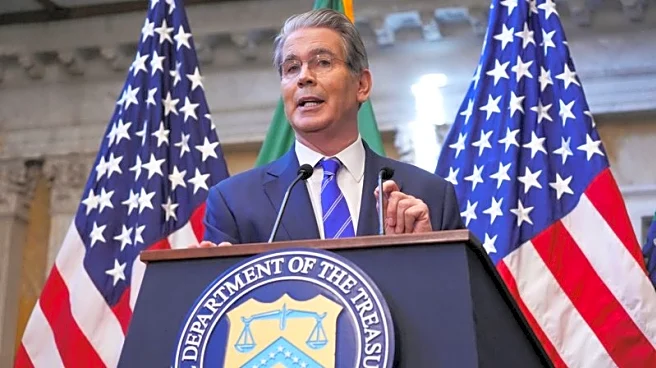What's Happening?
The ongoing U.S. government shutdown is beginning to affect the economy, with federal workers missing paychecks and consumer confidence declining. The shutdown has disrupted travel, delayed government approvals, and closed museums, impacting millions
of federal employees and contractors. Analysts predict a weekly hit to quarterly growth of approximately 0.2 percentage points, equating to $15 billion. The Trump administration's unprecedented actions, including denying backpay and initiating permanent firings, add to the uncertainty. The shutdown coincides with a slowing economy, already burdened by tariffs, immigration rule changes, and previous government spending cuts.
Why It's Important?
The government shutdown poses significant risks to the U.S. economy, potentially derailing steady growth trends. The lack of economic data due to the shutdown complicates policymaking, increasing the risk of errors. The shutdown's impact on consumer spending and unemployment rates could have long-term consequences, affecting economic stability and growth. The administration's actions and the political standoff highlight challenges in governance and fiscal policy, with implications for future economic strategies.
What's Next?
If the shutdown continues, the economic impact could worsen, with rising unemployment rates and decreased consumer spending. The administration's measures to mitigate economic pain may prolong the shutdown, reducing pressure for a resolution. Stakeholders will need to navigate these uncertainties to maintain economic stability and growth.
Beyond the Headlines
The shutdown reflects deeper issues in U.S. political and economic systems, highlighting challenges in governance and fiscal policy. The reliance on political brinkmanship and the inability to resolve budgetary conflicts may lead to long-term shifts in economic strategies and governance practices.














